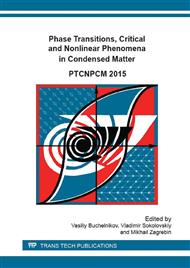p.13
p.17
p.21
p.25
p.30
p.34
p.38
p.42
p.46
InAlGaP Heterostructures and LEDs optimization
Abstract:
Changing LED performance characteristics, depending on Indium atoms concentration and at different temperatures were simulated. It was suggested that a heterostructure having p-n junction area S0 can be considered as a sum of “SmallLEDs (SLEDs)” electrically connected in parallel. Good correlation in simulation and experimental results has been obtained. It was determined that the best AlGaInP heterostructure contains 5 wide QW (width 10 nm each) in active region. The main thing is that in central ones there is maximum radiation and at the both ends of active region are “barriers” which help to concentrate electrons/holes in active region and additionally “protect” QW from different defects.
Info:
Periodical:
Pages:
30-33
Citation:
Online since:
March 2016
Keywords:
Price:
Сopyright:
© 2016 Trans Tech Publications Ltd. All Rights Reserved
Share:
Citation:


